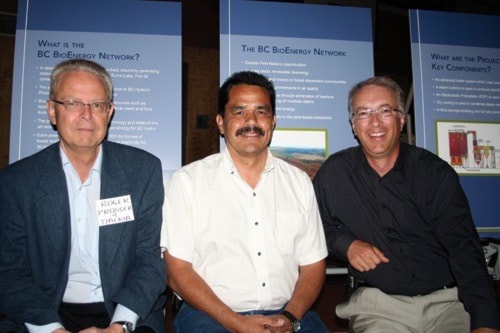Nearly, but not quite.
This is the outcome for the Ditni Yoh Green Energy project that was to be located 26 kilometres East of Burns Lake.
The project was submitted to BC Hydro's phase two call for bioenergy, making it through to be one of seven that were short listed, but was not chosen in the final round.
The four projects chosen are located in Fort St. James, Fraser Lake, Merritt and Chetwynd.
Ditni Yoh was to be a $140 million investment in the local area that would have provided between 20 and 60 full time jobs. The proposed 35 megawatt plant would have produced enough energy to supply power to 33,000 homes, which was more power than Burns Lake required from a residential standpoint, so the majority of the power was to go back to the grid.
This is the second blow for the project. It was originally submitted to BC Hydro in 2008 as part of the phase one call for bioenergy and was also passed over.
The phase two submission had been revamped and new partnerships had been formed between Western BioEnegry Inc. who is a 100 per cent owned subsidiary of Dalkia Canada, and six local First Nations groups collectively called the Lakes District Native Economic Development Corporation.
The six First Nations include; the Burns Lake Band, Lake Babine Nation, Skin Tyee Nation, Nee Tahi Buhn Band and the Stellat'en First Nation.
Harvie Campbell, director of Western BioEnergy Inc. who was working on the project said he is very disappointed that the project was not chosen to move forward.
"It is a personal disappointment as so many good friends including First Nations and local councillors worked to move the project forward," he said.
Campbell said it was a competitive process and Ditni Yoh was not chosen as the fibre supply costs were too high.
"The fibre sources for the four projects that were chosen were less expensive than they were for Ditni Yoh, but not by much, which made them more attractive to BC Hydro."
Campbell said for now it is tools down for the project but he went on to say that if the opportunity presents itself in the future the project could be resurrected.
"We are still prepared to support the project. It is very unfortunate because it was a very good, solid project and it had a lot of community support behind it."
"We did everything we could think of [to have the project selected]."
However all is not lost for Western BioEnergy Inc. with two of their three short listed projects selected in the final four.
The Merritt Green Energy Project and the Fort St. James Green Energy project will surge ahead now that BC Hydro approval has been given.
"The region did not completely lose out because the West Fraser Mills Ltd. Fraser Lake Sawmill Biomass project was chosen as one of the four," Campbell said, adding that it is still a blow to Burns Lake.
Burns Lake Band Chief Albert Gerow said to Lakes District News that he is equally disappointed the Ditni Yoh project was not chosen.
In a media release he said Ditni Yoh would have had an initial injection into the local economy of $140 million dollars along with significant construction jobs, long term plant jobs, as well as fibre supply jobs. "Spin off opportunities would have been significant."
He continued to say, the community of Burns Lake is heavily dependent upon the forest industry. "By adding a bioenergy plant to the Lakes District, alongside Babine Forest Products and Decker Lake Forest Products, it would have helped to stabilize the local economy by adding some diversification."
"All this is now lost due to the decision of BC Hydro."
"This is a project that has been in the works for over four years. When BC Hydro first started the Green Energy Initiatives, First Nations were not even considered as potential partners or even on the radar screen. Then BC Hydro came back with call for proposals which had a requirement to include First Nations."
We felt that the Ditni Yoh project would be a shoe in, because not only did we have First Nations participation, but we had a total of six First Nations as potential partners."
Chief Gerow said that having secured a 400,000 m3 annual license from the Ministry of Forests, as well as secure backing from Western BioEnergy Inc. and Dalkia Canada as well as the participation of six First Nations should be a feather in the cap of BC Hydro, to show that they are working with First Nations.
He said, "Burns Lake was the epicenter of the worst natural disaster B.C. forests have ever seen and something I would not want our grandchildren's, grandchildren to experience. The unprecedented attack on lodge pole pine trees by the mountain pine beetle devastated the forests in the Lakes District. Lakes District forest alone have had 80 per cent of the pine trees killed, provincially over 17 million hectares has been decimated."
"The bioenergy plant which we worked on for Burns Lake would have been a healing process in utilizing some of the beetle killed trees in a beneficial way."
Chief Gerow said he will now be working with consultants to determine where to go with the project.
"Obviously I hope that we can come to an early resolution with the cooperation of BC Hydro," said Chief Gerow, adding that he will now be approaching BC Hydro asking for an explanation, despite hearing that the project was denied due to fibre supply costs. Chief Gerow also said he will be taking the matter to Nechako Lakes MLA, John Rustad.
